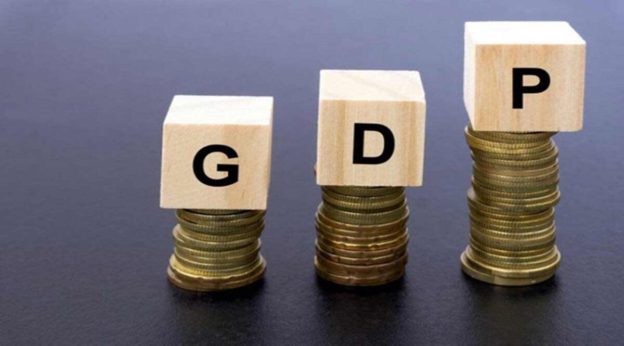Beyond the logic of compounding, how feasible is achieving the $5 trillion-mark by FY27? A lot depends on external and domestic factors.
Despite the shifting goal posts, the aspiration to become a $5 trillion economy in five years still burns bright among the ruling dispensation’s policy makers. Growth in the Indian economy is barely recovering from the nationwide shuttering of economic activity and partial lockdowns thereafter to battle the pandemic during the last couple of years. But that has not fazed the chief economic advisor in the finance ministry to state that the $5 trillion target is reachable by FY27.
IMF’s numbers indicated that this was not likely till FY29 but subsequently corrected the projections to suggest the target could be hit earlier as the CEA had indicated. This goal was first articulated by Prime Minister Narendra Modi in his Independence Day address after he secured a second term in 2019. In a first of sorts, the maiden Budget of Nirmala Sitharaman and the Economic Survey for 2018-19 shared this explicitly stated vision statement to become a $5 trillion economy by FY25 from $2.83 trillion in FY20.
The optimism of the CEA (and his immediate predecessor) regarding a $5 trillion economy is based on the fact that India remains the world’s fastest-growing large economy. The original doubling objective by FY25 was unattainable due to Covid-19. Doubling in five years’ time entails nominal GDP growth in dollar terms of 14% per annum as also the exchange rate. A doubling of GDP had taken place earlier in the four years from FY04 when growth hit 19% per annum to enable India to become a trillion dollar economy in 2007-08. That scorching pace has not been registered thereafter. Against the required rate of 14%, the pace of economic expansion contracted in the first year by 5.6% due to the pandemic. In FY22, growth recovered and was up 12.4% from the pre-pandemic GDP level. A lower growth assumption of 10% in dollar terms would take India’s GDP to $5.1 trillion by FY27 and $10 trillion by FY34, per the CEA.
Beyond the logic of compounding, how feasible is achieving the $5 trillion-mark by FY27? A lot depends on external and domestic factors. A “prolonged mild recession” in the most powerful economy in the world, notably the US, can impact India’s growth prospects according to Nomura. There are also de-globalising headwinds buffeting international trade which can slow down the growth engine of India’s exports as protectionism gains ground. Domestically, becoming a $5 trillion economy entails massive fiscal support for $300 billion of investments every year in roads, railway infrastructure, seaports, airports, transport, gas and inland waterways.
The Union budget does not have the surpluses to kick-start an infrastructure-led push for faster GDP growth. The Survey of 2018-19 accordingly talked of initiating a virtuous private investment cycle like in East Asia. The bad news is that the so-called animal spirits of entrepreneurs is low. The investment environment is sensitive to policy and regulatory uncertainty. Investors, both domestic and foreign, want improvements in the ease of doing business on the ground; they seek deep-going reform of land, labour and capital markets. Setting off a virtuous private investment upswing is currently only a work-in-progress. All these factors have a bearing on whether the $5 trillion objective is within reach by FY27 or whether the goal post needs to be shifted yet again.
https://www.financialexpress.com/opinion/towards-a-5-trillion-economy-lot-depends-on-external-and-domestic-factors/2571986/





